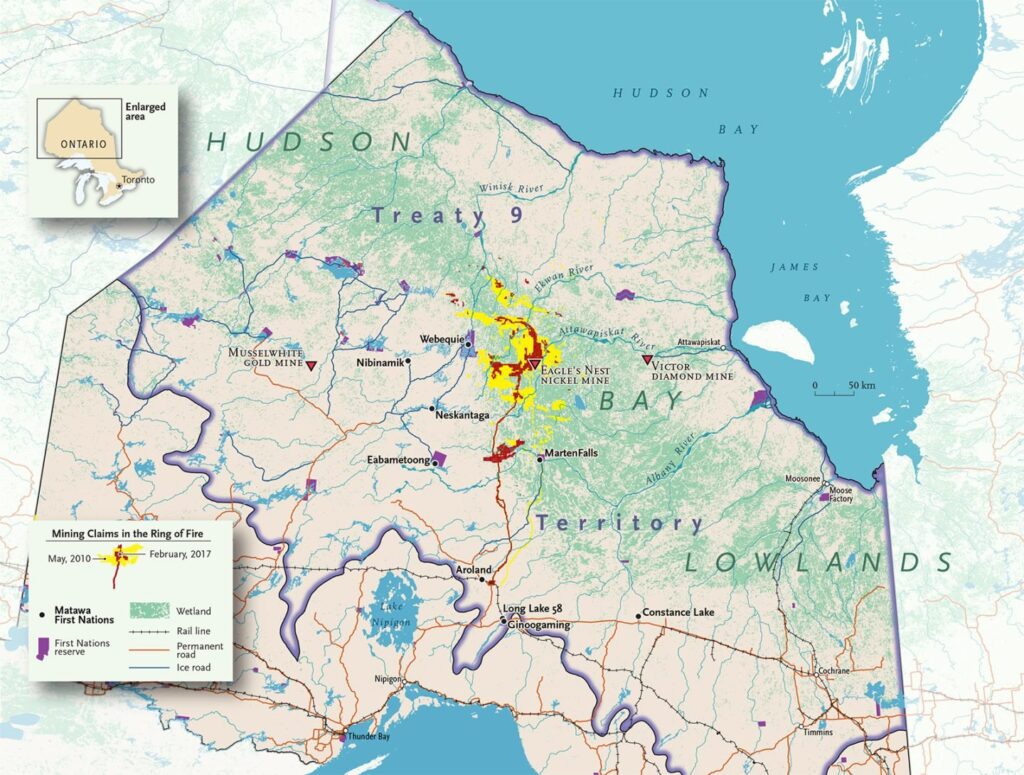
Introduction to the Ring of Fire
The Ring of Fire represents a significant mineral-rich area located in Northern Ontario, Canada. Its discovery of valuable resources such as chromite, nickel, copper, and platinum has garnered attention from the provincial government, mining companies, and Indigenous communities. The importance of this region lies not only in its economic potential but also in the interplay of infrastructure development, environmental considerations, and the rightful interests of Indigenous groups.
Current Developments and Economic Potential
The Ring of Fire is estimated to hold billions of dollars in mineral wealth, providing an invaluable opportunity to expand Ontario’s economy. The provincial government has indicated its commitment to speeding up the development of infrastructure necessary for mining, including roads and energy supply systems. Recent reports suggest that the construction of an access road could be completed within the next few years, which would enable mining companies to efficiently transport resources to markets.
Major mining companies, like Noront Resources and BWX Technologies, are already advancing their plans in the region. With the potential to create thousands of jobs and stimulate local economies, the Ring of Fire has captured the interest of both provincial and federal governments, especially in the context of post-pandemic recovery.
Indigenous Rights and Environmental Concerns
While the economic promise of the Ring of Fire is apparent, it is important to address the complex dynamics involving Indigenous communities. The area is located on traditional territories of several Indigenous nations, including the Matawa Tribal Council. Their involvement and consent are crucial to any development project proposed in the region. Many Indigenous leaders advocate for comprehensive consultations and a partnership model to ensure that their rights and heritage are respected.
Additionally, environmental groups have raised concerns about the potential impact of mining activities on the pristine landscape, wildlife, and local ecosystems. The balance between economic development and environmental sustainability remains a significant point of discussion among stakeholders.
Conclusion
The Ring of Fire in Ontario presents a compelling opportunity for both economic growth and community development. As discussions move forward, it is essential for policymakers, mining companies, and Indigenous representatives to find common ground that aligns economic objectives with ethical commitments. Future decisions will shape not only the economic landscape of Northern Ontario but also the social fabric of Indigenous communities and their way of life. The way forward will require collaboration, transparency, and respect for the heritage of the land.



